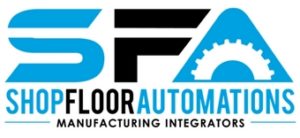When it comes to process improvements on the shop floor, communication can be a known issue. But not necessarily one that is high on the short-term corrective action priority list. Or as simple as machine monitoring notifications. Why is that?
The simple answer is that addressing communication issues can be uncomfortable and hard to rectify in some situations and downright explosive in others. One HR manager reported that a warehouse supervisor and maintenance manager tangled over company policies so much so that “fights worsened until the two departments didn’t want to work together.” Emotions aside, communication issues can also be costly to manufacturing operations.
The Costs of Poor Communication
Morgan Consulting cites communication as one of the biggest “four job skills when predicting both employer and employee satisfaction.” If you’re not working to improve communication on the floor, resulting employee turnover can cost up to a third of an employee’s annual salary, if not more in the current labor market. The search for manufacturing employees can be a time-consuming process as well.
Breakdowns in communication can also be responsible for increased injuries in the workplace. The findings of one study, “Fostering Safety Communication Among Construction Workers: Role of Safety Climate and Crew-Level Cohesion,” proposed “that a positive relationship exists between safety climate and safety communication levels.” And if you’re not safely producing quality product on time, you’ll see the impact in wasted materials, excessive downtime, and your bottom line. According to the National Safety Council, the cost of workplace injuries in 2019 alone was $171 billion.
One tactic to enhance shop floor communication is through improved manufacturing integration. By seamlessly connecting your personnel to your equipment, your company can open up the possibilities for greater visibility, productivity, and, ultimately, profitability. Let’s visit a few examples that can apply to your own manufacturing operations.
Multiple Means of Automated Communication
While your machines are running, they’re emitting useful data to indicate setup time changes, cycle time improvements per operator or per operation, maintenance indicators like temperature fluctuations and more. But what if you could make this data available to a wide swath of shop personnel, supervisors, managers, and directors via a number of channels in an automated fashion? Equipment monitoring software, such as the Scytec DataXchange machine monitoring solution, helps manufacturers do just that.

Equipment events can trigger machine monitoring notifications via Microsoft Teams for greater visibility to tackle challenges and improve processes quicker.
By expanding the reach of alarm alerts, threshold violations, and underperforming utilization data from your FANUC, Mazak, Okuma and other equipment, the more familiar your teams become with the data – and the more potential there is to tackle challenges and improve processes.
Shop floor flat-screen monitors
By installing flat-screen monitors throughout your floor with real-time data from your lathes, lasers, and other machinery, you are communicating corporate KPI priorities and unlocking key data for all your shop floor personnel. “When production teams own the results and have control over their work, analytics and metrics provide the feedback that keeps them motivated to do their best,” says Louis Columbus in Forbes. The exposure of data through flat-screen monitors ensures operators, machinists, and other workers are in sync with the expectations of management and gives them a position to identify ways to make progress with weak areas.
Automated e-mails and text messaging
When operators must wait upwards of an hour for material after they finish a job, their valuable time is wasted, morale is depleted, and shipments risk being delayed. The downstream costs can be significant. Proper communication to the materials manager via automated e-mails and text messaging, for instance, can ensure s/he is notified precisely when a specified percentage of parts remain. A modern machine monitoring system like DataXchange matches work/shop orders and part counts to the established threshold and facilitates the notification so managers are prepared for the next material delivery before material levels are exhausted. This makes instant messaging, in combination with dashboards that are accessible through mobile or desktop devices or monitors on the shop floor, a vital way to reduce downtime hours each week.
Automated Microsoft Teams messaging
For many manufacturers, lengthy inspection processes can lead to frustration on the floor. This frustration can swell as managers dedicate even more time and resources to determine where the process is breaking down. And more so, what improvements to make. By tracking ODI and machine statuses, a robust machine monitoring solution can detail out the inspection process and notify team member(s) via Microsoft Teams regarding specific events.
To start, ODI data collection shares when a machine is ready for inspections, when a part is actively being inspected and how long it’s taking the operator to start running the machine again. The availability of a machine for inspection can be signaled to the Quality team through a Teams notification, thereby removing any speculation or manual calls, e-mails or texts. Upon completion of the inspection a dashboard shows the results andtriggers an alert to the operator to run the job. Should a defined period of time lapse before the job begins, a supervisor can receive a Teams message regarding the delay.
With feature-rich machine monitoring notifications, manufacturers have the opportunity to remove communication issues from their corrective action priority list altogether. The display of equipment dashboards through flat-screen monitors and the automation of e-mail, text, and Microsoft Teams messaging based on machine events can go a long way toward diminishing material waste, unnecessary downtime and potentially missed sales. See how your manufacturing environment can improve its communication on the floor simply and effectively by attending a demonstration of the Scytec DataXchange machine monitoring software today.

